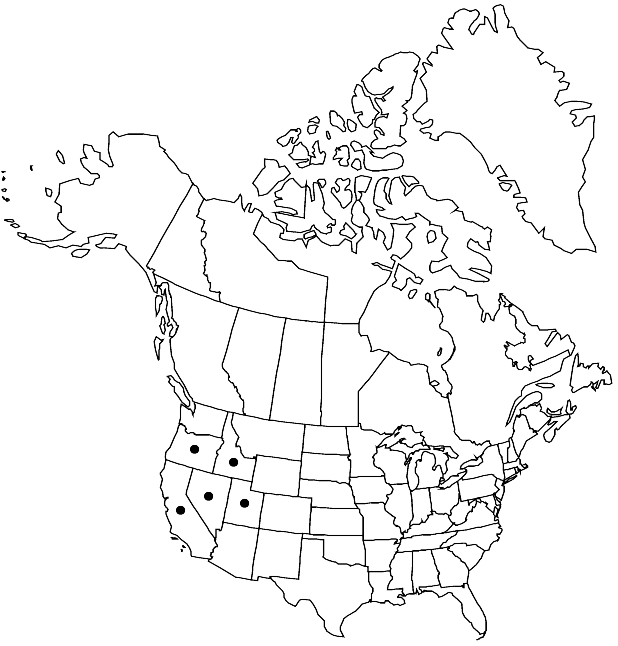Caulanthus pilosus
Botany (Fortieth Parallel), 27. 1871.
Biennials; moderately to densely pilose. Stems erect or ascending, unbranched or branched distally, 2–12 dm. Basal leaves rosulate; petiole 1–8 cm; blade oblanceolate or oblong (in outline), 2–24 cm × 5–90 mm, margins usually pinnatifid to pinnatisect, rarely dentate-sinuate (lobes dentate). Cauline leaves (distalmost) shortly petiolate; blade linear to narrowly oblanceolate, margins entire or dentate. Racemes (densely flowered), without a terminal cluster of sterile flowers, (sometimes proximalmost flowers bracteate). Fruiting pedicels ascending, 4–18 mm, glabrous or pilose. Flowers: sepals erect, (dark purple in bud becoming paler or greenish), narrowly ovate to lanceolate, 4.5–9.5 × 1.5–2 mm, (equal); petals purple, 7–12 mm, blade 3–4 × 1–1.5 mm, crisped, claw oblanceolate to spatulate, 4–9 × 1–2 mm; filaments tetradynamous, median pairs 4.5–10 mm, lateral pair 3–8.5 mm; anthers narrowly oblong, equal, 2–3.5 mm. Fruits ascending to divaricate, terete, 2–18 cm × 1–1.5 mm; valves each with obscure midvein; ovules 152–198 per ovary; style obsolete or, rarely, to 1 mm; stigma slightly 2-lobed. Seeds 1–2 × 0.7–1 mm.
Phenology: Flowering late Mar-early Jul.
Habitat: Flats, rocky slopes, scrub and sagebrush communities, pinyon-juniper woodland
Elevation: 600-2800 m
Distribution

Calif., Idaho, Nev., Oreg., Utah.
Discussion
Caulanthus pilosus is found in northeastern California, southwestern Idaho, Nevada, eastern and southern Oregon, and western Utah.
Selected References
None.
Lower Taxa
"elongated" is not a number."thick" is not a number."dm" is not declared as a valid unit of measurement for this property.